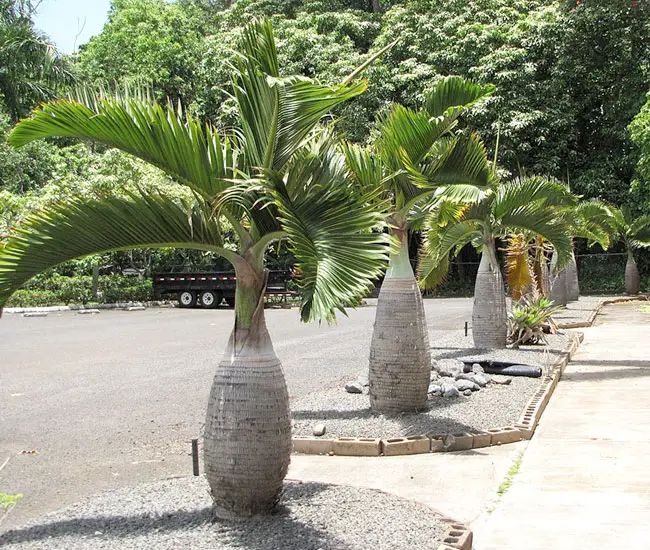
The Bottle Palm Tree, scientifically known as Hyophorbe lagenicaulis, is native to the small island of Round Island, located in the Indian Ocean off the coast of Mauritius.
Due to its limited native range and the ongoing conservation efforts on Round Island, the Bottle Palm is considered a rare and protected species. It is also cultivated in other parts of the world as an ornamental palm due to its unique appearance and attractive features.
This palm features a stout and swollen trunk that bears a striking resemblance to a bottle or flask, hence its common name. Bottle Palms are relatively small in stature, typically growing to heights of 6 to 10 feet, making them ideal for landscaping in confined spaces.
They thrive in tropical and subtropical regions and require well-drained soil and plenty of sunlight for optimal growth.
Quick Facts:
| Scientific name: | Hyophorbe lagenicaulis |
| Common names: | Bottle Palm |
| Origin: | Native to Mascarene Islands, which are in the Indian Ocean just East of Madagascar. |
| Growth Rate: | Slow. Up to 15 ft tall and 10 -15 ft wide. |
| Cold Tolerance: | USDA Zones 10b (35 – 40 F) to 11 (above 40 F) |
| Light Req: | Full sun to partial shade |
| Water Req: | Moderate. |
| Soil Req: | Widely adaptable. |
| Fruit: | Black. Not edible. |
| Propagation: | Seed, germinating in 3-6 months |
Bottle Palm Appearance
The Bottle Palm (Hyophorbe lagenicaulis) is a slow-growing palm, typically reaching a height of 10 to 15 feet and a similar width, although it often remains shorter at around 10 feet.
Its distinguishing features include a single trunk, approximately 2 feet in diameter, adorned with prominent ring scars and crowned with a green crownshaft at the top. The trunk, characterized by its gray color and unique bottle-like shape, gives the palm its common name.
The Bottle Palm boasts a compact crown consisting of 4 to 6 pinnate leaves, resembling feathers, that can grow up to 10 feet in length. These leaves are composed of approximately 140 leaflets, neatly arranged in two upward-pointing rows and extending to about 2 feet in length.
Bottle Palm Flowers and Fruits
The Bottle Palm produces small and inconspicuous cream-colored flowers. These flowers typically appear in clusters near the crownshaft, creating a subtle yet attractive display. While the flowers are not particularly showy, they add to the palm’s overall appeal during its flowering period.
As for fruit, the Bottle Palm produces small, spherical fruits that start out green and gradually turn black as they ripen. These fruits are about the size of a marble and are typically less than an inch in diameter. While not commonly consumed by humans, they are an important food source for local wildlife, including birds and small animals.
The combination of these modest flowers and small fruits contributes to the palm’s overall aesthetic charm, making it a unique and visually appealing addition to tropical and subtropical landscapes.
How to Care For Bottle Palm
Maintaining the Bottle Palm is relatively straightforward. However, it is important to note that it is not cold-hardy and cannot tolerate frost, although it can endure temperatures down to 32°F. It is best suited for USDA Zones 10b (35 – 40°F) to 11 (above 40°F).
This dwarf palm thrives in both full sun and partial shade and can adapt to various soil types, although it prefers moist, well-drained soil and is not particularly drought-tolerant.
Generally, the Bottle Palm is a hardy and healthy palm, occasionally experiencing potassium deficiency. To ensure its optimal growth, it is advisable to apply a high-quality palm fertilizer with a continuous-release formula twice a year during the growing season.
Bottle Palm Pictures
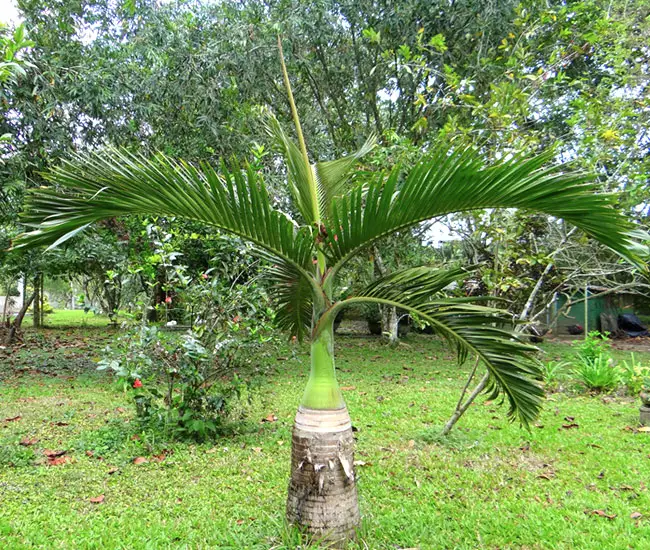
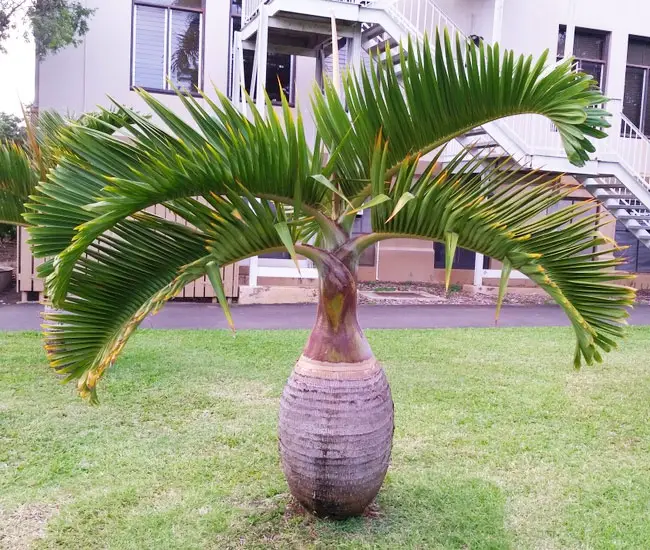
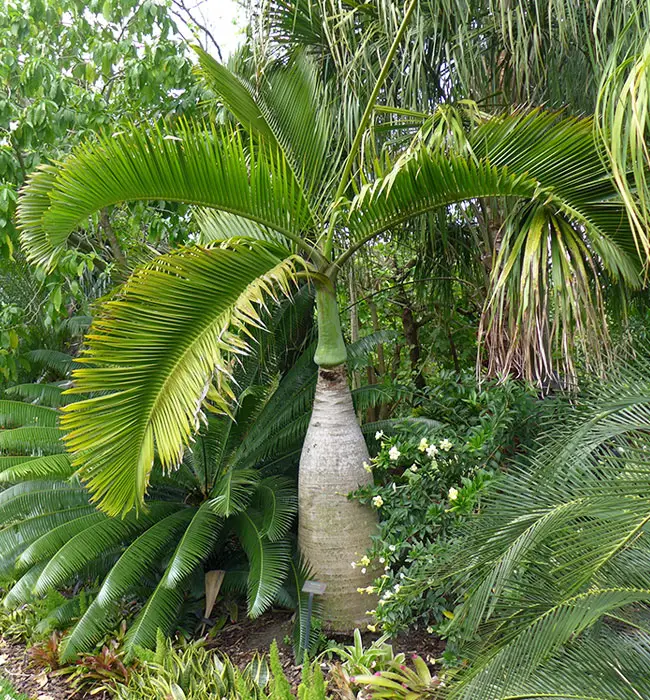
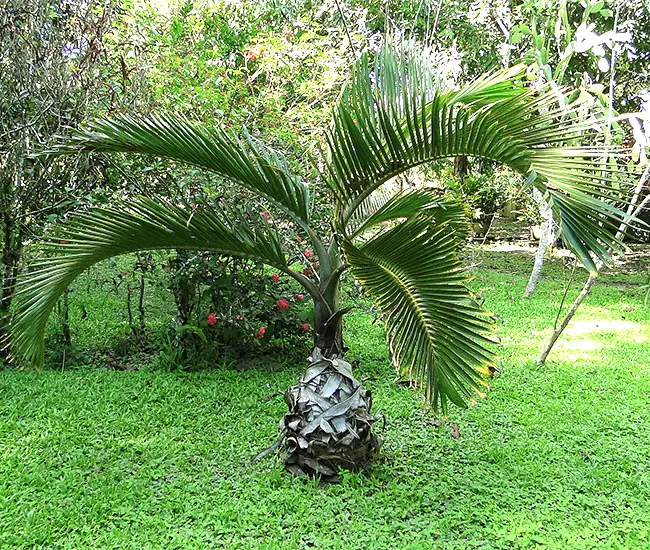
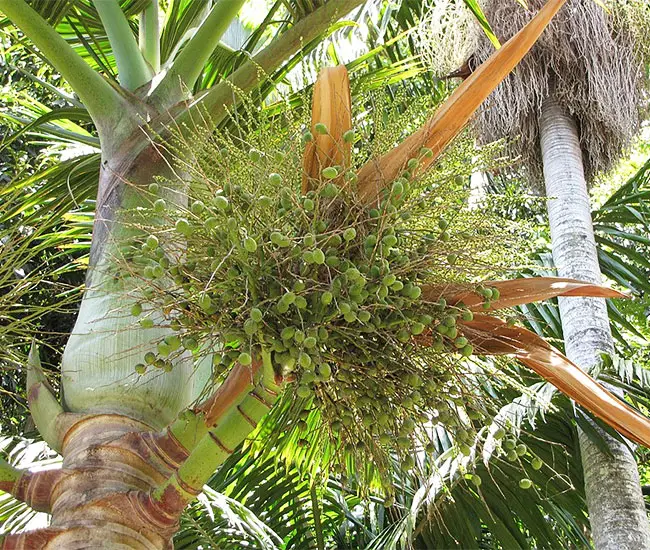
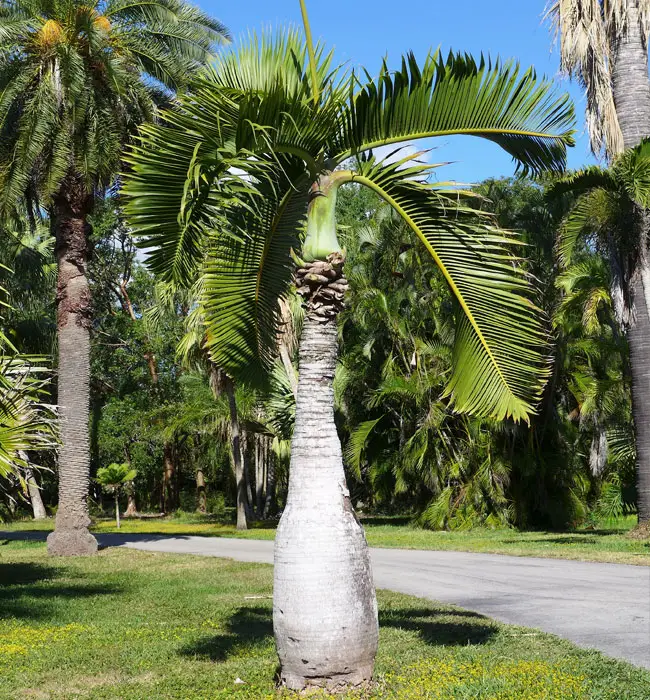
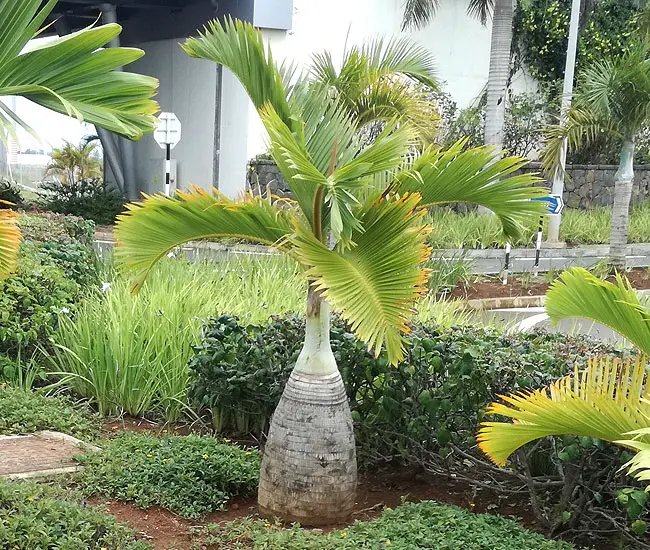
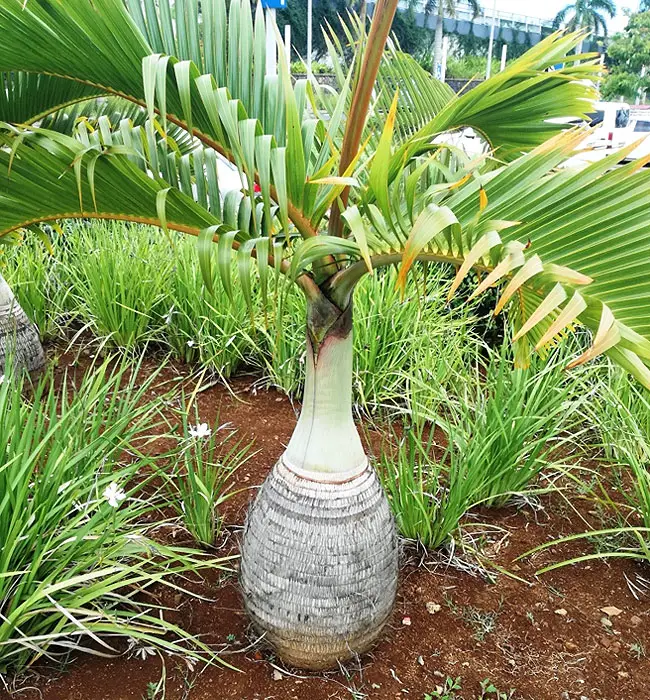
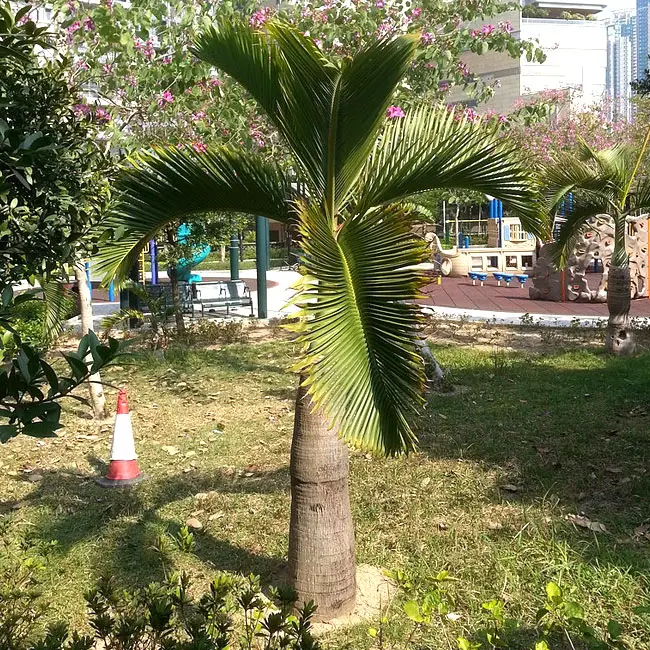
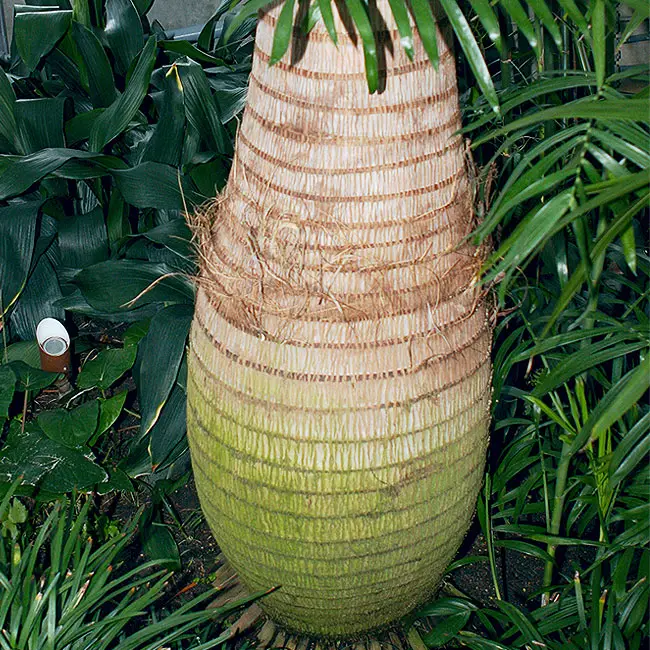
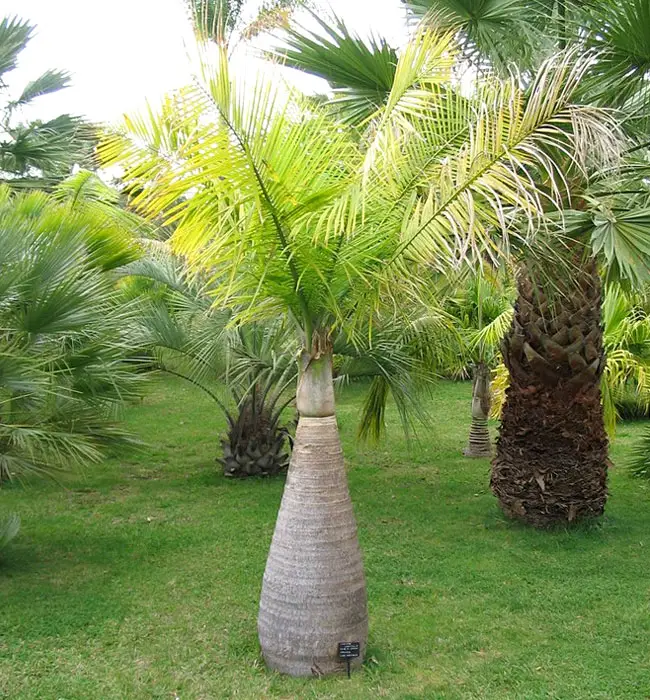
More information can be found on EDIS and Floridata sites.
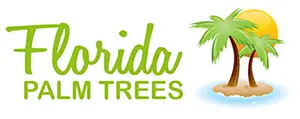

Hi,
Do you sell Hyophorbe lagenicaulis seeds?
WHen so, what is the price for 100, 250, 500, 1000 seeds?
(including shipping to the Netherlands)
Best regards,
Mark